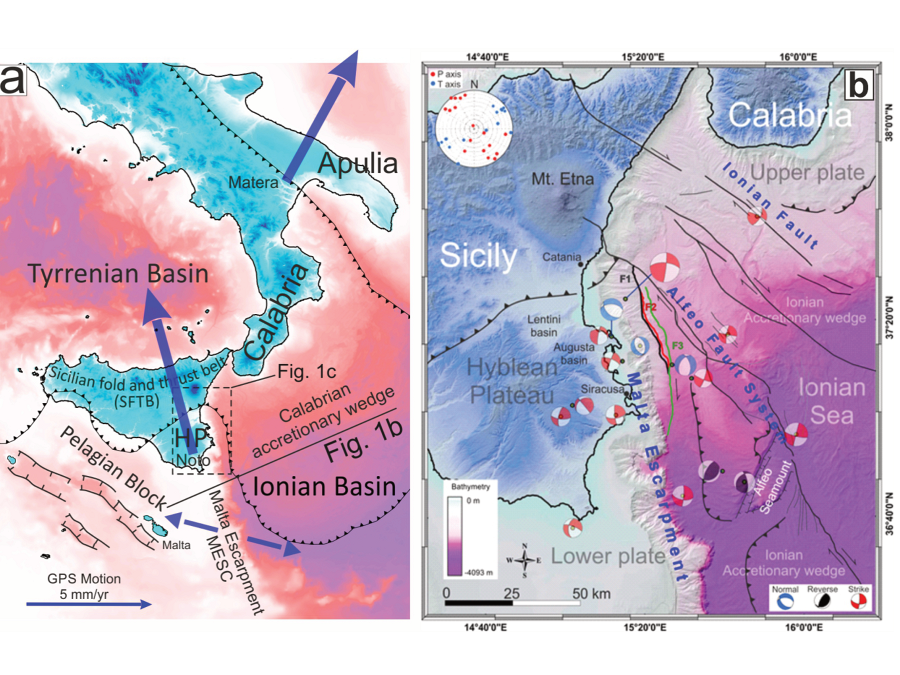Where do large earthquakes originate in the Ionian Sea off eastern Sicily?
02.02.2021

(2.2.2021) New data helps to better assess the hazards in the region.
In an international collaboration, researchers have obtained geological and geophysical data both on land and in the sea and have brought them together in a holistic approach. The study has now been published as a scientific article in the open-access journal "Frontiers in Earth Science". Authors from the Universities of Catania (Italy), Brest (France), and Kiel, as well as the Italian Institute of Geophysics and Volcanology INGV Catania, are involved. The first author of the study, Salvatore Gambino, spent a guest stay at the Center for Ocean and Society in March 2020.
The research focuses on the supposed sources of historical and potential future earthquakes in the area of the northern Malta Escarpment. The Malta Escarpment is a 290 km long sub-oceanic cliff with very steep flanks up to 3 km high. It is one of the most prominent geomorphological structures in the central Mediterranean. The data shows offsets and seabed deformation in the northern part of the Malta Escarpment. Furthermore, the authors propose another mechanism, which may play an important role in near-surface deformation: a deep-seated slope instability related to the Malta Escarpment, which could contribute to the fault’s displacement. Seabed offsets suggest active seabed movements, which could also be partly associated with the devastating earthquakes and subsequent tsunami waves in 1169 and 1693 AD.
To the original article: https://www.frontiersin.org/articles/10.3389/feart.2020.594176/abstract